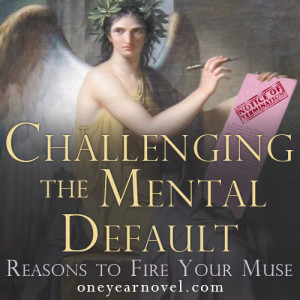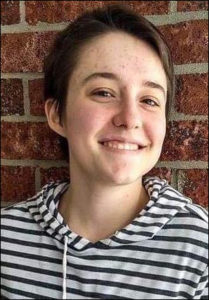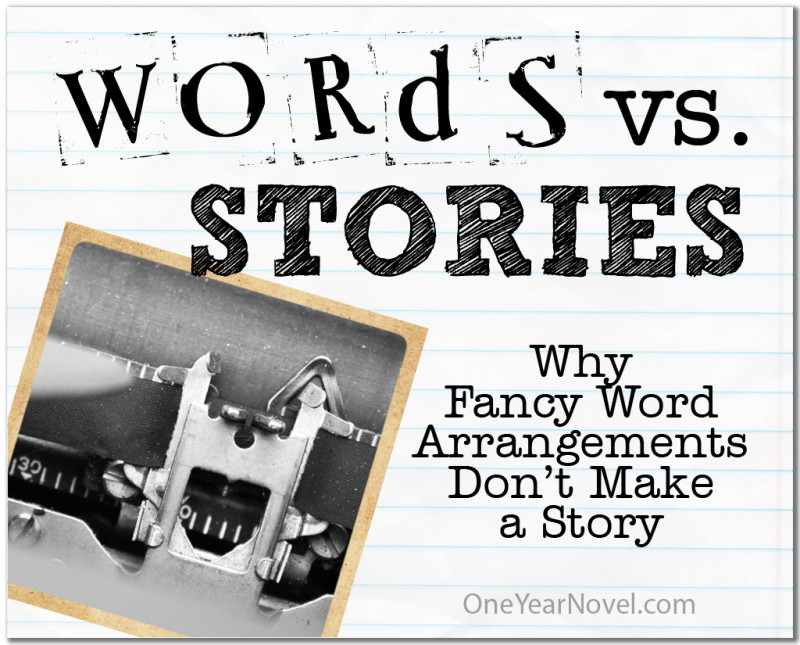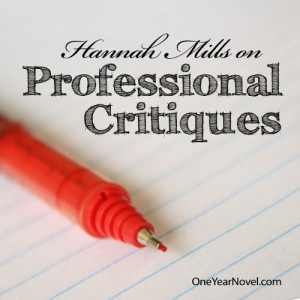Challenging the Mental Default: Reasons to Fire Your Muse
By Gabrielle Schwabauer, Staff Writer
If you’ve made a practice of critiquing the work of other writers, you’ve probably heard the indignant cry of “But this is just how I imagined him!” Many writers operate under the assumption that the imagination is a sacred place, the heart and soul of their characters, setting, and plot. If the mentor springs forth from this mental crucible as an old, bearded white man who passes on cryptic messages to our hero, who are we to argue?
This blog post is here to challenge that mindset.
Yes, characters do take on a sort of “life of their own” as you develop them. They may say or do things that surprise you, and that’s usually a good sign! But your original perception of a character is not set in stone. If they’re boring you, or if they feel too much like you, or if they’re stagnant in the story, you need to make a conscious decision to change them. Simple as that!
Writers often talk as if the Muse is real, as if she shows up to them while they’re storyboarding and says, “This is Gerald; he’s a cute teenage boy with dark, curly hair; he likes to eat pizza and make sarcastic jokes, and he’s fiercely loyal.” And now you have a real live Gerald on your hands, the Muse having made him fully canon.
This is not the case. When the Muse hands you Gerald, your job is to reassess. Say “Muse, Gerald looks suspiciously like that picture I saved on Pinterest last week, and come to think of it, he also looks suspiciously like Harold and Wilford.” The Muse, it turns out, is not terribly creative. The Muse likes copy-and-paste.
Recognize that the Muse is deeply rooted in your own mental default. We all have them—for locations, for behaviors, and especially for characters. This is the reason why so many modern fantasy writers, heavily influenced by Tolkien’s works during their formative years, repeatedly populate their worlds with humans, dwarves, elves, orcs, and halflings. If you haven’t made a concerted effort to overcome it, your brain probably has a default setting for race, gender, age, health/ability level, and even hobbies. Your brain selects between 3% of the viable options over and over and over again and pretends it’s this huge cornucopia of variety. (“Hear me out—what if THIS attractive teenage boy had RED hair?”)`
I was blind to my own mental default when I first began writing. My first protagonist, Autumn, was a white North American 16-year-old high school student with brown hair and a love of books and reading. (Any guesses as to my appearance and personality traits at the time?) She was very serious (like me) and she really wanted siblings (like me), and she was also boring, boring, boring.
To be clear, there is nothing inherently boring about 16-year-old white girls who like to read. I think I was a very interesting one! What IS boring is intellectual laziness: accepting the default without any conscious thought, any attention to other possibilities.
I don’t have a magic recipe for character creation, but I have had a lot of success with an intentional, almost clinical method. Frances, the younger sister in my current project, exists because I realized that I rarely wrote about strong same-gender relationships—siblings and best friends were usually of the opposite gender, probably because most of my friends were boys growing up. So I decided, “Okay, I’m giving Ira a sister so that I will learn to write sister-sister relationships better.” And you know what? It worked! I can’t imagine the story without Frances in it anymore.
A different narrator from the same story is a girl named Calisto, an 11-year-old Latina child with hair so short it’s nearly buzzed, a fierce independent streak, and a passion for construction. At first, I suspected that these traits might be a reflection of my own childhood tomboy tendencies, but I ultimately decided that they were appropriate for the story and served the character well. However, I also thought “How can I subvert this trope a little bit?” As a result, I chose to give Calisto a warm, affectionate relationship with her parents—one where she highly values their opinion of her—rather than the emotionally distant parents of a detached, completely independent child that typically accompany the rough-and-tumble narrator. The resulting family relationship has been one of the richest and best developed in the story so far.
Ask yourself questions. Would this character be more interesting if they were elderly? Was their gender/race/whatever an active choice on my part or just an assumption? I’m not talking about “political correctness,” whatever that means, or filling some kind of quota. There’s nothing wrong with cute white teenagers as long as they’re a conscious decision—but if your story world is populated entirely by cute white teenagers, things start to feel a bit unrealistic.
Variety also gives the reader the advantage of quick differentiation. Characters who look and act very different are easier to distinguish and feel more distinct. This goes for age, race, gender, height, weight, clothing style, whatever. If you’ve got two mentors in your story, consider making them opposite genders, or one young and one old, or members of two opposing cultures—whatever. Again, it’s not a formula. You can have two old-beardy-man mentors if you’re able to make those characters come alive in other ways. But for me, it’s been so, so helpful to actually just pay attention to the assumptions my brain is making in the background and start actively counteracting them.
And hey, the Muse isn’t all bad. Every once in a while, she will present you with some delightfully unexpected character twist or plot revelation. That boring sidekick will throw a brick through the window, and you’ll realize the secret they’ve been hiding. The mentor will sell your protagonist into slavery for a single hot meal, and suddenly you’ll be sitting at attention while you write. I’m not saying that you should scrap every single early idea just because it came to you quickly and easily. But I am saying that you should never accept an idea unexamined. If you like your first concept of a character, great! Set it aside. Imagine what Gerald would be like if he were Geraldina instead, or if he were thirty-five, or if he had crooked teeth and a mole on his cheek. Maybe all three! Scrap ideas that obviously don’t make sense. Imagine what purpose these alternate Geralds might serve. Then make a decision about the “real” Gerald, the one you want on display in your story. It’s okay if you end up selecting the original “concept art,” as it were, as long as you make that choice because it’s the most fitting.
And you know what? The more you do this exercise, the less time it will take. Once you retrain your brain to remember that humans come in all shapes and sizes, it will start presenting you with a broader spectrum of choices. Think about Facebook’s ad suggestions: Every time you click on an article or an advertisement, you’re teaching Facebook what you like and what you want it to show to you. In the same way, every time you write a character, you’re teaching your brain how it should define “character” or “person” and what kind of people you want it to imagine. If you start guiding your mind towards variety, the Muse will eventually catch on—instead of a long string of Pinterest-perfect protagonists, you’ll start getting a mother of three who teaches botany at the local community college, or an elderly man with dark, wrinkled skin who works at an aquarium, or a ten-year-old boy questioning the existence of God and stealing from a nearby pet store. In my experience, the more I guide my imagination toward fresh, inventive interpretations, the more my imagination starts to do some of that work for me behind the scenes.
…
Have you ever found that your second or third version of a character was much more interesting than the first?
…
About Gabrielle
Gabrielle Schwabauer has loved stories for as long as she can remember. (The Lord of the Rings holds the top spot, as it has for twelve years running.) She likes reading books, playing video games, eating pancakes, looking at pictures of borzoi, and having already written today.





This was a really challenging post. Gabrielle! I know I’m certainly guilty of going with the first thing my brain thinks of, and that’s not usually right. I like what you said about making a conscious choice. Sometimes our brains come up with something great; we just need to make sure we’re choosing it deliberately. Thanks!
YES. I had a character in the first book I finished (a character you met, actually) who was your stereotypical bully. Originally, he was a plot device, a Start With A Fight tool, a reason for my hero to use his powers. But as I stepped back, I realized that I didn’t want another stupid bully. I wanted a braniac bully, who ruled his half of the school through caricature and mockery, who could tear down a person’s credibility with a few words, who had never needed to resort to physical violence. This makes me want to write the book over again.
Wow, Gabrielle! You wrote this up at the right time! 😀
I have a really hard time coming up with characters and the first time I wrote through my first few chapters, my characters were all really boring.
I’m still working with them and trying to make them unique, but you posed some really powerful questions here that I hope to apply in my character development shortly.
Thank you! 🙂